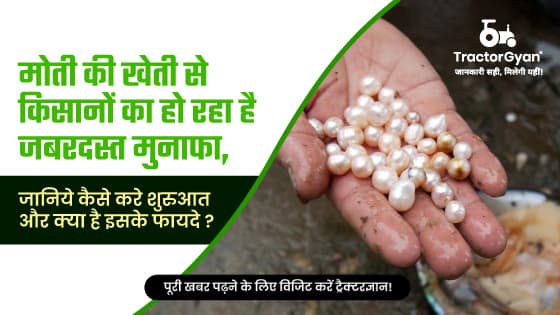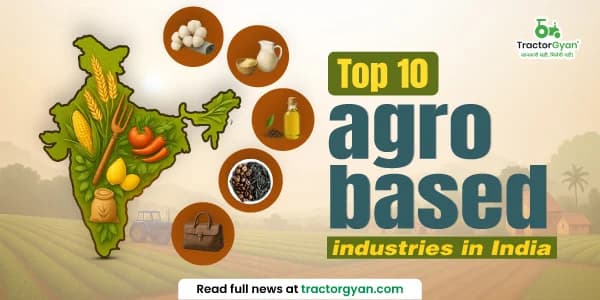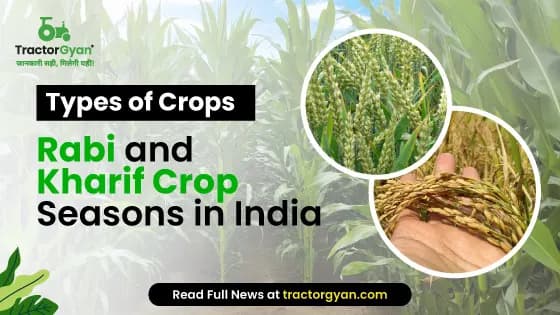Pearl Farming in India: What is Pearl Farming? Process, Benefits & Investment
Table of Content
Commercial pearl farming is a profitable business idea in 2024. As the cultured pearl industry is changing rapidly in India, the demand for cultured pearls is also increasing day by day. However, major driving factors for pearl farming are new technologies and more widespread access to modern technologies. These “cultured pearls” are larger and of a more consistent size and colour than natural pearls.
Moreover, developing cultured pearls completely depends on a surgical procedure called grafting. The process involves surgically implanting an artificial nucleus (shell bead) into the tissue of a pearl oyster farming in India.
To set up a Pearl farming business in India, you will need to have sound technical knowledge. Therefore, this post provides you insights on how to start a profitable pearl farming business for your ready reference.
But, what is pearl farming? let's define it in a few sentences for your precise understanding.
What is Pearl Farming in India?
The pearl is produced from the mollusk. The whole process through which the production of pearls takes place is called pearl culture. All those who are interested in commencing pearl farming at home won’t face any issues in carrying freshwater pearl culture. Currently, in 2024, the demand for pearls in the global market is increasing at an accelerating pace. There is plenty of its uses and benefits in numerous forms, especially in the grocery realm.
Moreover, Pearl farming in India is a profitable business venture for farmers. And is also very simple compared to different types of businesses in demand, because there is no significant need or requirement for any food to form a pearl.
Why is commercial pearl farming profitable? - (Benefits of pearl farming business)

Pearl farming is a lucrative business because of the high value and demand of the final product produced. Also, the price of the pearly greatly depends on the size and quality of the pearls generated. Moreover, this is a specific farming business where the final product is lightweight and nonperishable in nature and appearance. In addition, this business is also a compatible occupation for people who like to work in the aqua field where you like working in the water. And also one who carries hobbies and skills of boating, diving, and fishing.
Apart from the grafting process, pearl farming is a relatively easy aquaculture business with high profits for the owner.
Here the business doesn’t demand artificial feeds, complicated farm structures, or constant attention towards the product. However, you must properly manage the farm and its products to get a successful return on investments.
It can be the best source of income for farmers. As oysters are voracious filter feeders, they keep the water clear from pelagic algae and floating detritus.
While pearl oysters are edible, they are rarely eaten and thus, they can be bred in murky, polluted water to achieve the results.
Things to consider before starting a pearl farming business in India
-
Firstly, you will need to dedicate your time and put in extra effort along with your initial investment. because the project concerning pearl farming in India is a long-term project, which requires your patience and management of things.
-
You have to choose a secured place or location for setting up a commercial pearl farming business in India. It must be free from floods, predators, as well as other threats or disasters.
-
Moreover, You need to have a great source of Oysters to culture in the pond.
-
furthermore, you should possess excellent skills in grafting exercises in pearl culture, which is considered important in pearl farming projects.
-
You can even visit already-established pearl farms near you to get an idea or guidance on freshwater pearl culture in India.
-
Eventually, you must think of preparing or finalizing a great marketing channel to sell the pearls prepared on your farms.
-
This way, you can step forward with composing a business plan for pearl farming in India taking into account different financial aspects of the farm, from purchasing mussels to marketing pearls in markets.
How to start Pearl Farming in India?

1. Site Selection
The first important step towards producing pearls is setting up a good farm site. It depends on the site, how well pearl oysters grow, the quality of the pearls, and how safe the farm is from theft or other threats. And also how much it costs to operate and manage the farm. Furthermore, it becomes difficult to move the farm after establishment.
2. Setup The Farm
Pearl farms require very simple structures to set up for growth. However, you have to provide some means of support for holding pearl oysters off the bottom. There are three basic types of farm structures available: Tahitian longlines (so-called because they are the most common method used in Tahiti), rafts, and underwater trestles.
You also have the choice to use some combination of these, depending on your needs and location.
3. Preparing The Pearl Oysters
There are various ways to hold adult pearl oysters during farming including chaplets, lantern baskets, pocket nets, and floating or submerged trays. However, you have to choose the method which is best for your location and budget. Whichever method you opt to use, ensure that you carefully clean the pearl oysters every time you move them or transfer them into new containers.
4. Managing The Farm
Growing pearl oysters is not that different from growing any crop. So you must tend the farm often for the pearl oysters to grow well and generate high-quality pearls. You should regularly check for any damage, missing lines, and floats there. Furthermore, you also should clean the pearl oysters of the fouling organisms that grow on their shells. Plus, you should always handle the pearl oysters gently during the cleaning process.
5. Grafting The Pearl Oysters
The perfect pearl oyster size for grafting is about 4.5-6 in (12-15 cm) in length. You can also graft older and larger pearls, but there are fewer chances to produce high-quality pearls. In addition, you must clean the pearl oysters monthly before grafting. As Cleaning keeps the pearl oysters healthy and in good condition.
6. Harvesting
You can now harvest the pearls when the nacre layer is 0.08-0.12 in (2-3 mm) thick. Do not make a mistake by producing pearls with thin nacre by trying to harvest early, this can result in under-quality pearls, that are not matured fully. After harvesting, you should keep the pearls in a secure place. Wash pearls properly after harvesting. Finally, always keep records of every grafting and harvesting of your pearl farming business to track the production.
Investment Cost & Margins Associated With Pearl Farming In India - (Estimations)
Pearl farming business requires patience to get a good outcome from it, as you get a substantial return after 4 to 5 years. So you must keep on investment to operate & manage the farm. Even after the first harvest, you may not get the desired ROI However, there is the major cost you will need to carry out while establishing pearl farming in India. These are as follows:
-
Cost of purchasing pearl oysters
-
Equipment and supplies cost
-
Shipping costs for equipment, supplies, and import taxes
-
Farm structure and platform investment
-
SCUBA gear expenses
-
Utilities and labour charges
Now, let's assume the approximate cost or investment of the pearl farming business in India.
-
Pearl farming in India requires a minimum land area of ½ to ¾ acres for sufficient farming.
-
Pearl farming executes the cultured technique which requires double implantation.
-
Here approximate density for stocking is somewhere around 9000 - 10000 mussels.
-
It takes a 15 - 18 month timeline for culture.
-
The price of a single oyster is around 20 to 30 rupees.
-
In the Indian market, the price of 1 mm to 20 mm oyster pearl lies between Rs 300 and Rs 1500.
-
In the current scenario, designer beads are getting good responses in the Indian as well as international markets, which get a good price.
-
It can reap huge amounts of profits by exporting pearls to the international market rather than sticking to the Indian market.
-
After taking out the pearl from the oyster, the sale of oysters can be made in the market.
-
Oysters also generate Several decorative kinds of stuff.
-
On a large scale, the work of extracting perfume oil from oysters’ takes place in Kannauj, due to which oysters may also get sold in the local market on an immediate basis.
Conclusion
Pearl Farming in India holds a large scope for farmers that are looking for something big, unique, and productive in the current scenario. The demand for pearls is limitless. In the international market, there is a consistent growth in the demand for pearls giving wings to the pearl farming business in India. At TractorGyan, we help you by providing information related to the latest farming and agricultural practices in India.
About TractorGyan
Tractor Gyan is an expert-led platform that aims to empower Indian farmers by providing accurate and timely information, and technological advancement about tractors and farm equipment in India.
TractorGyan helps farmers with New Tractor information, Compare Tractors, Tractor prices, Buying and selling of second-hand tractors, Tractor Insurance, Tractor Finance, Tractor tyre, Tractor Implements, Tractor EMI calculator and more.
On our Platform, we have information about leading brands :
- In tractors like New Holland, Preet, Farmtrac, Vst shakti
- In Tyres like BKT, Ceat, Apollo etc.
- In Tractor Loan/Finance like Central Bank Of India, Hdfc Bank, etc.
- In Tractor Implements like Kartar, Fieldking, Landforce, KMW, etc.
- In Tractor Insurance like Mahindra Finance, Axis Bank, ICICI Bank, etc.
TractorGyan is Helping India mechanise by delivering crucial information about tractor buying and guiding farmers at every step so that they get a tractor or farm equipment that empowers and equips them to produce quality yield.
Category
Read More Blogs
Tenant farming is an agricultural production system in which landowners leased out their land to others, who don't have their lands; either on rent or free of cost without transferring the title of the land. Whereas, Sharecropping is a legal arrangement concerning agricultural...
Sericulture or silk farming in India is the process of cultivating silkworms & obtaining silk from them. Sericulture is a very important agro-based rural industry increasing rapidly in India, which has the potential to generate high income for small and marginal farmers....
Commercial pearl farming is a profitable business idea in 2024. As the cultured pearl industry is changing rapidly in India, the demand for cultured pearls is also increasing day by day. However, major driving factors for pearl farming are new technologies and...
Write Your Comment About Pearl Farming in India: What is Pearl Farming? Process, Benefits & Investment
.webp&w=1920&q=75)
Top searching blogs about Tractors and Agriculture
18 Dec 2025
18 Dec 2025
29 Jul 2025
08 Sep 2025
03 Jul 2025
30 Jul 2025
30 Jul 2025
30 Jul 2025
29 Jul 2025
30 Jul 2025
26 Dec 2025
31 Jul 2025
18 Dec 2025
26 Dec 2025











.webp&w=640&q=75)



.webp&w=2048&q=75)










.webp&w=2048&q=75)
.webp&w=2048&q=75)



























